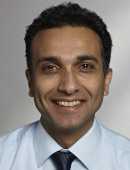05 Jun Baby Teeth Can Expose Toxic Levels of Minerals Associated With Autism
MedicalResearch.com Interview with:
Manish Arora, PhD
Associate Professor
Environmental Medicine & Public Health
Icahn School of Medicine at Mount Sinai
MedicalResearch.com: What is the background for this study? What are the main findings?
Response: Autism has both genetic and environmental risk factors. Our aim was to study if exposure to toxic metals, such as lead, or disruptions in the uptake of essential nutrient elements such as manganese or zinc would be related to autism risk. Furthermore, we were interested in not only understanding how much exposure had taken place but also which developmental periods were associated with increased susceptibility to autism risk.
Researchers suspect that the risk factors for autism start early in life, even prenatally, but measuring in utero exposures is technically very challenging. We used a newly developed technique that uses lasers to map growth rings in baby teeth (like growth rings in trees) to reconstruct the history of toxic metal and essential nutrient uptake. We applied this technology in samples collected from twins, including twins who were discordant for autism. This allowed us to have some control over genetic factors.
We found that twins with autism had higher levels of lead in their teeth compared to their unaffected twin siblings. They also had lower levels of zinc and manganese. The lower uptake of zinc was restricted to approximately 10 weeks before birth to a few weeks after birth, indicating that as a critical developmental period.
MedicalResearch.com: Is there anything else you would like to add?
Response: Both genes and environment are involved in autism, and our early development is likely a critical developmental window when we are most susceptible to the autism risk factors. This study does not make any clinical recommendations and further work is needed in larger populations to extend these findings.
MedicalResearch.com: Thank you for your contribution to the MedicalResearch.com community.
Citation:
Note: Content is Not intended as medical advice. Please consult your health care provider regarding your specific medical condition and questions.
More Medical Research Interviews on MedicalResearch.com
[wysija_form id=”5″]
Last Updated on June 5, 2017 by Marie Benz MD FAAD

